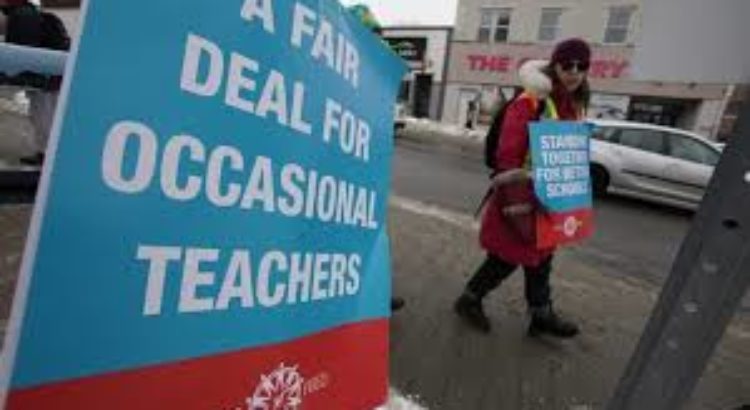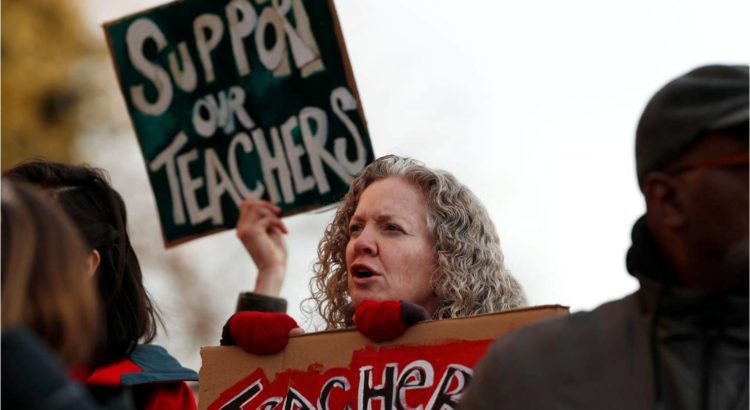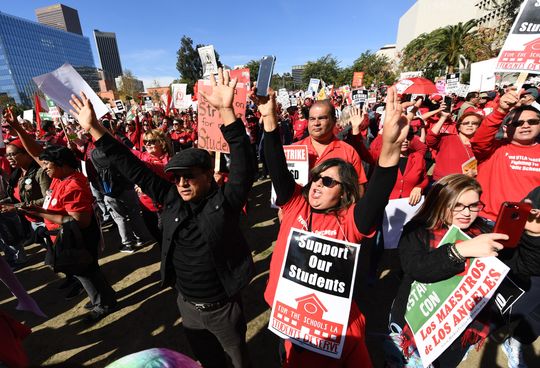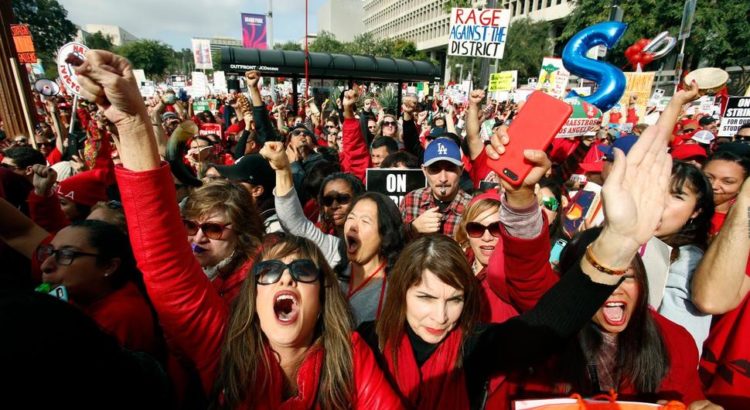North America/ Canada /18.02.2020/ Source: www.cbc.ca.
Over two million students will be out of class this Friday as Ontario’s four largest teacher unions plan to hold a joint one-day strike if there is no progress in contract talks with the provincial government.
The unions that will participate in Friday’s strike are the Elementary Teachers’ Federation of Ontario (ETFO), the Ontario Secondary School Teachers’ Federation (OSSTF), the Ontario English Catholic Teachers’ Association (OECTA) and the Association des enseignantes et des enseignants franco-ontariens (AEFO).
Classes are also cancelled on Monday for Family Day. At the moment, no strikes have been announced for Tuesday through Thursday.
Negotiations at a standstill
Contract negotiations between the Progressive Conservative government and the education unions have largely stalled with several major issues unresolved, including the role of seniority in hiring practices, class sizes, funding for students with special education needs and mandatory e-learning.
The unions are also asking for around two per cent in annual salary increases, while the government won’t budge beyond offering one per cent.
It passed legislation last year capping wage hikes for all public sector workers at one per cent for three years. The teachers’ unions and several others are fighting the law in court, arguing it infringes on collective bargaining rights.
See below for a list of eastern Ontario school closures for the upcoming week. Make sure to visit your school board’s website for the most up-to-date information.
Monday Feb. 17
Schools will be closed for Family Day.
Friday Feb. 21
Ottawa-Carleton District School Board
All OCDSB schools will be closed.
Extended Day programs and all Community Use of School permits will also be cancelled.
Ottawa Catholic School Board
All OCSB schools will be closed, unless an agreement is reached between the province and OECTA. All bus and van transportation will also be cancelled.
Before- and after-school programs will be cancelled for the day, although all Ottawa Catholic Child Care Corporation Toddler and Preschool programs and all EarlyOn Centres will be open and will operate according to their regular hours.
Community Use of Schools programming is not affected by the one-day provincial strike.
Catholic District School Board of Eastern Ontario
All CDSBEO elementary and secondary schools will be closed to students.
Parents who have children that attend child care or before- and after-school care programs in CDSBEO facilities should contact their individual provider for details during the strike.
Upper Canada District School Board
All UCDSB students will have the day off as schools are closed.
Parents and guardians whose children attend a child-care facility at a UCDSB school should contact their child-care provider with any questions.

Renfrew County District School Board
All elementary and secondary schools will be closed.
Child-care facilities may continue to operate. Parents and guardians should contact their operator to confirm whether they will remain open and if they’ll have additional child-care spaces during strike days.
Community-use bookings will continue as usual.
Limestone District School Board
All elementary and secondary schools will be closed, and students in Grades 9 to 12 should not attend school. This includes students in co-op and those attending dual credit and programs at St. Lawrence College.
Literacy and Basic Skills, Adult ESL and Teacher Assisted Self-Study programs will also not run.
Extra-curricular activities, field trips and all sports sanctioned by the Kingston Area Secondary Schools Athletic Association will be cancelled.
Hastings-Prince Edward District School Board
Classes are cancelled for all students.
Algonquin and Lakeshore Catholic District School Board
All ALCDSB schools will be closed to students.
Conseil des écoles publiques de l’Est de l’Ontario
Classes and school transportation will be cancelled.
Before- and after-school programs for toddlers, preschoolers and children ages four to 12 will not operate.
For daycare services operated by a third party, parents and guardians should contact the child-care service to check if they will remain open. Programs for infants, toddlers and preschoolers offered by third-party partners will be open.
Conseil des écoles catholiques du Centre-Est
All classes will be cancelled.
Daycare centres for preschool children will remain open, except for l’Académie catholique Notre-Dame and l’École élémentaire catholique L’Envol, both of which will be closed.
Parents of school-aged children who require child care should contact their provider to learn if those centres will remain open.
All EarlyON Centres will be closed with the exception of:
- l’École élémentaire catholique Jean-Robert-Gauthier.
- l’École élémentaire catholique Des Voyageurs.
- l’École secondaire catholique Béatrice-Desloges.
- le Centre scolaire catholique Jeanne-Lajoie.
Source of the notice: https://www.cbc.ca/news/canada/ottawa/school-strikes-third-week-february-1.5464875

























 Users Today : 159
Users Today : 159 Total Users : 35403132
Total Users : 35403132 Views Today : 194
Views Today : 194 Total views : 3332367
Total views : 3332367